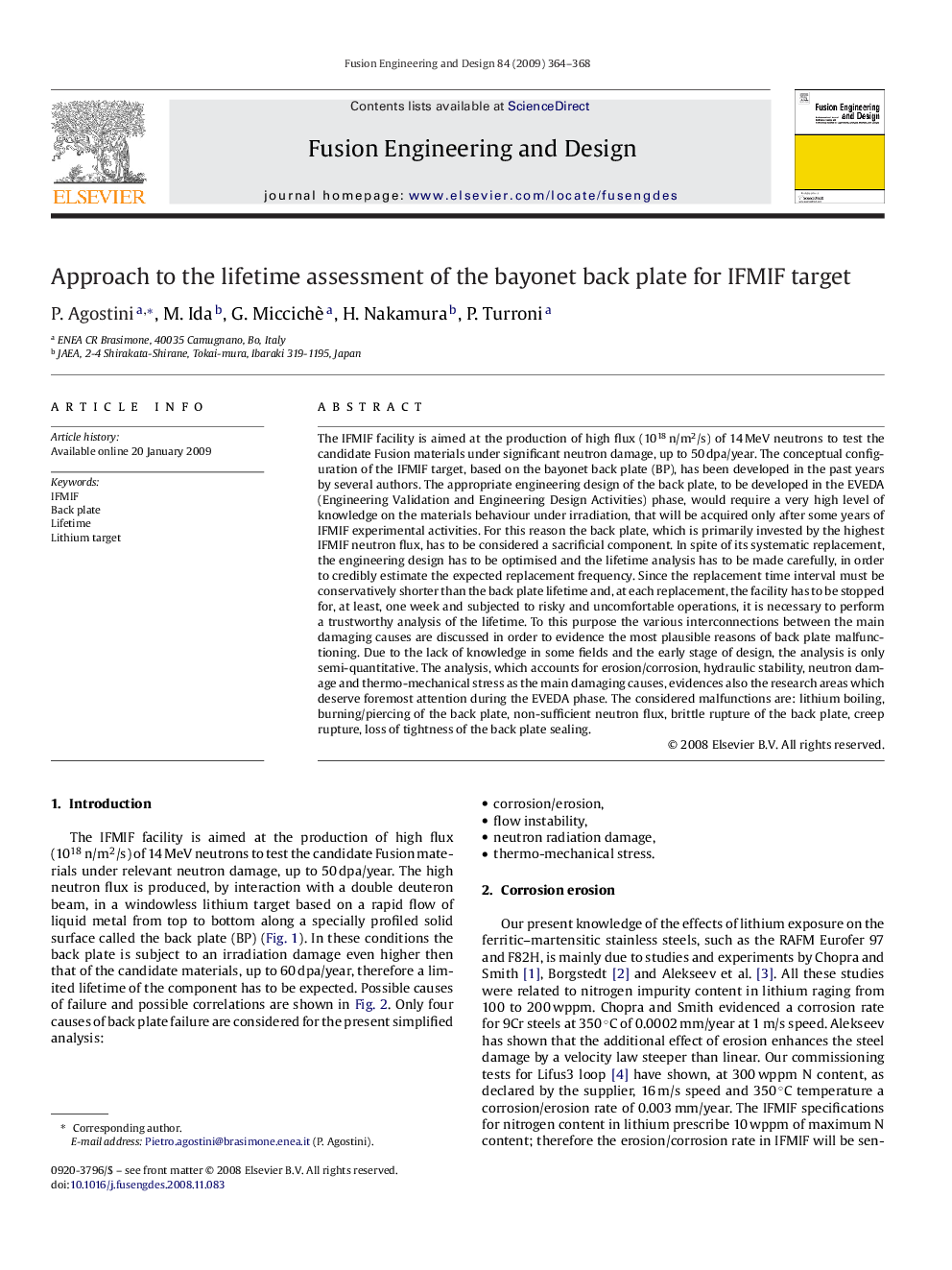| Article ID | Journal | Published Year | Pages | File Type |
|---|---|---|---|---|
| 273369 | Fusion Engineering and Design | 2009 | 5 Pages |
The IFMIF facility is aimed at the production of high flux (1018 n/m2/s) of 14 MeV neutrons to test the candidate Fusion materials under significant neutron damage, up to 50 dpa/year. The conceptual configuration of the IFMIF target, based on the bayonet back plate (BP), has been developed in the past years by several authors. The appropriate engineering design of the back plate, to be developed in the EVEDA (Engineering Validation and Engineering Design Activities) phase, would require a very high level of knowledge on the materials behaviour under irradiation, that will be acquired only after some years of IFMIF experimental activities. For this reason the back plate, which is primarily invested by the highest IFMIF neutron flux, has to be considered a sacrificial component. In spite of its systematic replacement, the engineering design has to be optimised and the lifetime analysis has to be made carefully, in order to credibly estimate the expected replacement frequency. Since the replacement time interval must be conservatively shorter than the back plate lifetime and, at each replacement, the facility has to be stopped for, at least, one week and subjected to risky and uncomfortable operations, it is necessary to perform a trustworthy analysis of the lifetime. To this purpose the various interconnections between the main damaging causes are discussed in order to evidence the most plausible reasons of back plate malfunctioning. Due to the lack of knowledge in some fields and the early stage of design, the analysis is only semi-quantitative. The analysis, which accounts for erosion/corrosion, hydraulic stability, neutron damage and thermo-mechanical stress as the main damaging causes, evidences also the research areas which deserve foremost attention during the EVEDA phase. The considered malfunctions are: lithium boiling, burning/piercing of the back plate, non-sufficient neutron flux, brittle rupture of the back plate, creep rupture, loss of tightness of the back plate sealing.
